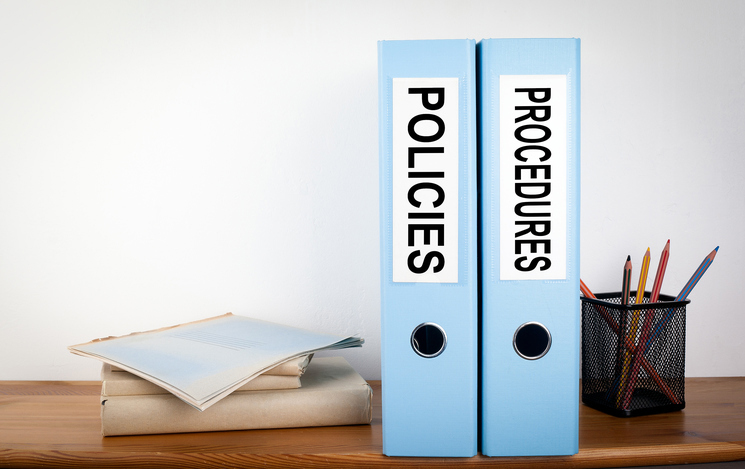For more than 2 years, challenges from the COVID-19 pandemic have continued to make their presence known—not to mention the “Great Resignation” that has required HR policies to adapt quickly and continuously.
At the beginning of the pandemic, when each day was “unprecedented,” employees woke up to initial responses that provided short-term solutions. But now it’s time to focus on the longer-term solutions. Workplaces saw more of this in 2021 as businesses realized they could no longer wait out the pandemic. 2022 has shown the same, if not more, longer-term policies shaped by COVID-19, especially as more treatments, data, and vaccine measures emerge and evolve.
To better understand these changes in HR, UpCity worked with Pollfish to survey 600 business owners and employees across the United States and Canada. Their responses explore employees’ desire to work remotely, in person, or hybrid in the wake of the coronavirus, and the survey examines how these preferences are shaping workplace policies across industries.
The survey also reveals that it’s about more than just remote versus in-office work for employees and jobseekers. Employees want flexibility and options, which explains the popularity of hybrid work models and working outside of the standard 9–5.
More Employees Say They Prefer to Work in a Hybrid Environment Post-COVID-19
Thirty-nine percent of surveyed professionals stated they prefer working in a hybrid environment (half remote, half in person), and 32% said they prefer to completely work from home.
Countless professionals have developed a love/hate relationship with remote work over the past 2 years. For many survey respondents, the pros and cons of working from home balance one another out. Working remotely gives employees more flexibility, options, and greater work/life balance. Workers can do a load of laundry in between meetings, run errands in a flash, and spend more time with their families and significant others. Not to mention, some employees are taking advantage of remote working to travel more without taking paid time off (PTO).
But this flexibility doesn’t come without drawbacks. It can be isolating for employees who live alone and don’t get a chance to socialize otherwise. For some, working from home has made it more difficult to maintain a work/life balance. Then there are distractions from pets, family members, and roommates that have hindered productivity for some. Employers have also expressed dismay over how a lack of time spent together impacts collaboration and culture.
The survey shows a significant percentage of workers would prefer to continue working in a hybrid model—even as more businesses provide the option for their workforces to return fully to the office. This provides a “best of both worlds” situation: the flexibility of connecting with management and their teams as needed but also maintaining the benefits of working remotely. People want change, but they also want a return to normalcy to some degree.
Employees Want More Flexibility Overall
When it comes to providing employees with options, it doesn’t stop at allowing them to choose between the office and working from home. Survey respondents who reported being jobseekers ranked the ability to work flexible hours as one of the top traits they’re looking for in their next role.
This was ranked above employee health benefits (although this was a close second), career advancement opportunities, insurance options, and more. Flexible hours allow professionals to make adjustments to better fit their lifestyles. For example, parents have taken advantage of this to spend more time with their children during the day and then use the time after their kids go to bed to catch up on work.
What Does This Mean for HR Professionals?
When creating new company policies, it’s a challenge to please everyone. But when employees are given choices and flexibility, HR can create policies that show how committed the employer is to employees’ well-being.
It’s time to shift how employee attendance and timekeeping are tracked. Twenty-three percent of professionals reported their employee time tracking has changed since the pandemic. That’s because, with more employees working remotely, businesses have needed to rethink what it means to be “at work” for remote workers. Many employers have responded to this by implementing controls that change how productivity is monitored and, in some cases, requiring employees to check in throughout the day.
HR professionals should also look across all their company policies to update them to include virtual interactions. For example, employers reported a shift in their policies regarding sexual harassment and nondiscrimination policies due to interactions taking place across virtual interfaces and outside of the office, which are difficult to manage and oversee.
Due to these policy changes, a significant 87% of professionals reported their workplace culture has improved post-COVID-19, as their employers have made significant strides to meet the changing preferences of a now highly mobile workforce.
How HR Departments Can Flourish in 2022
If your company hasn’t been adaptive to employee needs in the post-pandemic landscape, it’s time to reassess. More and more employees believe remote or hybrid work arrangements should be the standard. In fact, a staggering 56% of jobseeking respondents in the survey stated they are only searching for remote roles.
With remote work and hybrid arrangements driving policy decisions, businesses that want to remain successful need to invest in tools to create a space in which these arrangements can flourish and implement workplace protections for the safety of employees and the integrity of company productivity.
Dan Olson is cofounder and CEO of UpCity, a resource that connects millions of businesses with over 100,000 business-to-business (B2B) service providers they can trust. He is active in the Chicago start-up community and has spent his career building technologies that enable businesses to gain visibility, build reputation, and grow revenue.

